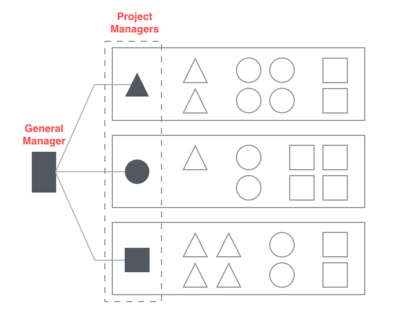Portfolio Management in a Startup
(→Background) |
|||
| Line 5: | Line 5: | ||
A Startup can be seen as a business venture conceived to grow rapidly. In Product Development Startups, this potential growth is strongly related to speed-to-market. | A Startup can be seen as a business venture conceived to grow rapidly. In Product Development Startups, this potential growth is strongly related to speed-to-market. | ||
| − | Even that Startups' organisation is (by genetics) very flexible and adaptable to changes, a common issue in different types of Startups is certainly the lack of resources: human resources, financial resources, lack of material/equipment and/or knowledge, can jeopardise the success of | + | Even that Startups' organisation is (by genetics) very flexible and adaptable to changes, a common issue in different types of Startups is certainly the lack of resources: human resources, financial resources, lack of material/equipment and/or knowledge. If not properly managed, it can jeopardise the success of any Startup in an early stage. It is therefore necessary, that CEOs handle this issue from a managerial perspective, in order to enhance effective and efficient organisational processes, which will consequently lead to more effective and efficient business processes. <br /> |
| − | [[File:project-based-org.png|right|400px|thumb|left|Figure 1: Project Based Organisational Structure]] Historically, startups' organisational structure has been dominated by a Project Oriented structure, where the CEO can be seen as the Project Manager. As product portfolio grows, | + | [[File:project-based-org.png|right|400px|thumb|left|Figure 1: Project Based Organisational Structure]] Historically, startups' organisational structure has been dominated by a Project Oriented structure, where the CEO can be seen as the Project Manager. As product portfolio grows, CEOs need to delegate the management of the different projects to others, that is, Project Managers. This form of organisational structure is the most suitable for Startups as the resource allocation trade-off is very agile and result-oriented. In contrast, Its major weakness is that the lack of Functional Management can stagnate the organisation's capabilities in terms of specialisation and gain of expertise throughout the organisation. In return, a rapid and effective cross coordination between the different functional departments is achieved. |
<br /><br /><br /><br /><br /><br /><br /><br /><br /> | <br /><br /><br /><br /><br /><br /><br /><br /><br /> | ||
Revision as of 23:00, 13 September 2015
Startups focused on Product Development that have a relatively wide product/project portfolio need to deal with scarce resources allocation. This issue is not trivial, as the lack of resources can lead to bottlenecks in the development phases, which are crucial for the survival of the Startup. This article aims to make a selection of the Agile methods, tools and organisational structures that best suit early stage Startups, specially those focused on Product Development.
Contents |
Background
A Startup can be seen as a business venture conceived to grow rapidly. In Product Development Startups, this potential growth is strongly related to speed-to-market.
Even that Startups' organisation is (by genetics) very flexible and adaptable to changes, a common issue in different types of Startups is certainly the lack of resources: human resources, financial resources, lack of material/equipment and/or knowledge. If not properly managed, it can jeopardise the success of any Startup in an early stage. It is therefore necessary, that CEOs handle this issue from a managerial perspective, in order to enhance effective and efficient organisational processes, which will consequently lead to more effective and efficient business processes.
